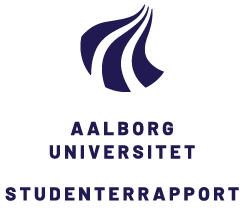
Hvem er de danske muldyr? - En undersøgelse af muldyrs bevæggrunde og karakteristika med afsæt i Politiets sager over domme for hvidvask.: En undersøgelse af muldyrs bevæggrunde og karakteristika med afsæt i Politiets sager over domme for hvidvask.
Oversat titel
Who are the danish money mules? A study of money mules' motives and characteristics: A study of money mules' motives and characteristics
Forfattere
Semester
4. semester
Uddannelse
Udgivelsesår
2024
Afleveret
2024-06-04
Antal sider
90
Abstract
This master thesis examines the characteristics and motivations of 100 money mules convicted of money laundering in Denmark and investigates how to prevent money muling. Through an abductive approach, this study utilizes document analysis with the purpose of creating a set of relevant variables, which include: 1) amount of money, 2) criminal history, 3) money mule motive, 4) level of criminal involvement, 5) recruitment, and 6) currency transfer. Additionally, the document analysis provides a categorization of the convicted money mules, and places them into three different profiles created by National Centre for Economic Cybercrime (NCIK). The theoretical foundation consists of Sutherland’s Social Learning Theory and Akers' Social Learning Theory of Crime, Rational Choice Theory by Cornish and Clarke, Albert Cohen’s theory of subculture mechanics, complemented by Techniques of Neutralization by Sykes and Matza. By applying these theories, the analysis shows that the 100 convicted money mules predominantly fit into three categories characterized by three distinct motives: tempted, helpful and vulnerable. Furthermore, the descriptive analysis finds that the majority of the 100 convicted money mules are men aged 15-26, who are mostly recruited face to face. Additionally, 78 percent of the money mules had been convicted prior to their money laundering conviction. This thesis discusses the strategies for crime prevention and their effectiveness in preventing money mules from getting involved in money laundering. To this effect the thesis explores virtual reality as a promising prevention strategy to educate and deter the youth from money muling. The conclusion suggests that crime prevention strategies should be adapted to money mules' motives.
Emneord
Muldyr ; Money mules ; Bevæggrunde ; Hvidvask ; Motivation ; Karakteristika
